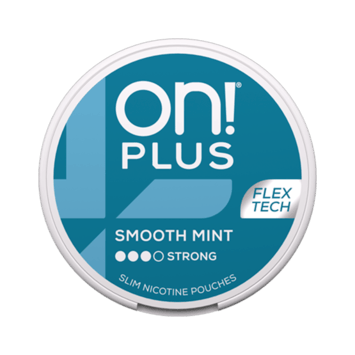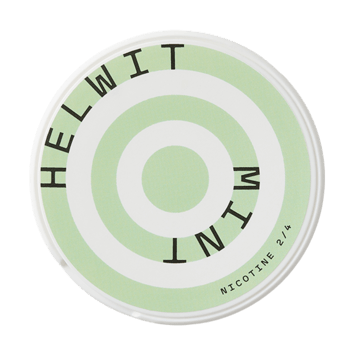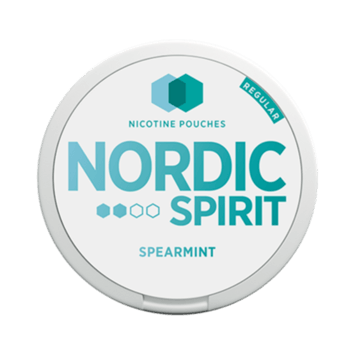How do nicotine pouches work?
Philip Plainstein

Nicotine pouches are a hit for people who want to kick tobacco but not nicotine. They are widely liked for being discreet and efficient. But what’s the buzz behind these tiny packets? Let’s peel back the layers and see how they bring a new twist to the nicotine game, without the smoke.
Key Takeaways
- Nicotine pouches are a tobacco-free and smoke-free nicotine experience.
- They are placed between the gum and lip to allow absorption through the oral mucosa.
- Nicotine pouches offer a convenient on-the-go option for satisfying cravings.
- While nicotine pouches may provide an alternative to smoking, it is important to consult with a doctor before using them as a means of quitting smoking.
- Further research is needed to fully understand the long-term effects and potential risks associated with the use of nicotine pouches.
What are nicotine pouches?
Nicotine pouches are a top pick for those who want to be free from tobacco. They are small bags placed between the gum and lip. This lets you absorb nicotine and flavours easily.
They are unlike other nicotine products because there’s no tobacco leaf in them. The mix includes nicotine, water, flavours, sweeteners, and plant fibres. This mix gives a pleasant and pure enjoyment without the risks of tobacco.
But, these pouches are not a quit-smoking aid approved by the FDA. They might say they could help you stop smoking, but it’s smart to talk to a doctor first. Everyone’s different, so be careful when using them to quit smoking.
How to use nicotine pouches
Using nicotine pouches is easy. It’s all about putting them in the right place for the best effect. Here’s a simple guide to make the most of it:
- Prepare the pouch: Press the pouch before using it. This spreads the moisture and flavour evenly.
- Place the pouch: Put the pouch between your gum and lip. Find a comfy spot for it to work well.
- Absorption and duration: Leave the pouch in your mouth for up to an hour. It absorbs the nicotine slowly through your mouth’s skin. This way is secretive and works nicely without smoking.
Don’t smoke or swallow the pouch while it’s in your mouth. This could mess up how it’s supposed to work.
With nicotine pouches, you might notice some side effects. These can be things like hiccups, ouchy gums, needing more nicotine, a painful mouth, or feeling sick. Always talk to a doctor if you feel not good or worried.
Remember, just use your own pouch. Sharing is not caring in this case; it can be bad. If a pouch is swallowed, get help right away.
“Proper placement and allowing the nicotine to be absorbed through the mucous membranes ensures an effective nicotine experience with nicotine pouches.”
Nicotine pouches are there if you want to smoke less or not at all. They are a neat and sneaky way to get your nicotine fix. Stick to the guides and don’t hesitate to talk with a doctor if need be. This way, you can get the most of them, safely.
Safety and health effects of nicotine pouches
Nicotine pouches are being studied for their safety and health impacts. It’s important to know the risks and talk to a doctor before using them. Unlike gum or patches, nicotine pouches don’t have FDA approval for quitting nicotine.
Nicotine pouches give a way to fight urges without tobacco. But, you should know they might cause gum or mouth soreness. Nicotine is addicting and can harm health in many ways.
Nicotine affects the heart, lungs, and stomach. It can speed up the heart and make breathing harder. Stomach issues like nausea can also occur. For pregnant people, it’s best to stay away from nicotine. It could lead to serious health problems and weaken the body’s ability to fight off illness.
Scientists are still exploring the long-term effects of using nicotine pouches. They want to know if they could cause cancer.
It’s wise to talk with a healthcare professional before trying nicotine pouches. A doctor can look at your health and suggest safer ways to quit nicotine or control your cravings.
| Safety and Health Effects | Nicotine Pouches |
|---|---|
| Product Regulation | Not FDA-approved as a nicotine replacement therapy |
| Side Effects | Gum irritation, sore mouth, addiction |
| Health Problems | Heart, lung, stomach, fertility issues; high blood pressure; weakened immune system; potential artery wall hardening |
| Long-term Effects | Uncertain; potential risk of cancer |
| Recommendation | Consult with a healthcare professional before using nicotine pouches |
Nicotine pouches versus traditional smoking or vaping
Nicotine pouches might be less risky than smoking or vaping. But, they’re not fully safe. Remember, nicotine is always addictive and can harm your health. This is true no matter how you take it in.
The FDA doesn’t watch over nicotine pouches closely. This leads to issues with how they’re made, marked, and sold. So, the quality and rules might not be as strict as with regular tobacco products.
Thinking about using nicotine pouches instead of smoking or vaping needs thought. Talking to a doctor is wise. They can help you understand the risks and benefits for you.
“The long-term effects of nicotine pouches relative to smoking or vaping are still uncertain. While they may have certain advantages in terms of nicotine exposure, it is crucial to understand that nicotine itself can be addictive and detrimental to health.”
– Dr. Emma Johnson, Addiction Specialist
The FDA’s Role in Nicotine Pouches Regulation
Nicotine pouches are not looked at as closely as cigarettes by the FDA. This can make it hard to be sure they’re safe. So, scientists are still studying their effects.
The FDA hasn’t said that nicotine pouches can help you quit smoking. They prefer other nicotine products that are FDA approved, like gum and patches. These have been checked more carefully.
Nicotine Exposure and Health Risks
- Smoking: Inhaling smoking’s many harmful chemicals can cause lung cancer and heart disease.
- Vaping: Vaping can harm the lungs and heart due to its chemicals and metals.
- Nicotine Pouches: These pouches may help avoid smoking’s direct risks. But, they are also addictive and can harm your health. We are still learning about their health effects.
Know the risks of using nicotine pouches. Stopping smoking is the best way to improve your health in the long run.
Concerns about marketing and appeal to young people
Experts worry about how nicotine pouches are promoted, mainly through attractive packaging and many tasty flavours. This marketing might draw in young folks and those who don’t smoke. They might not know how dangerous nicotine is. Also, social media stars push nicotine pouches, which makes them even more popular.
The way nicotine pouches are sold is aimed at getting teens hooked. They use cool designs, bright colours, and exciting flavours. Social media makes this even more effective. Influencers show them as cool and trendy. This has health experts alarmed. They fear this charm could lead to teen nicotine addiction, risking their health without knowing it.
“The marketing of nicotine pouches raises serious concerns. The attractive packaging and appealing flavors can catch the attention of young people who may not fully comprehend the dangers of nicotine,” says Dr. Emily Thompson, a tobacco control and youth addiction expert.
Young people are especially vulnerable to the marketing strategies employed by the nicotine pouch industry. Flavours like strawberry, mint, and mango could make using nicotine seem normal to kids, creating a new wave of nicotine users.
The Power of Social Media Influencers
Social media stars really impact what youngsters buy. Their posts and support make nicotine pouches seem cool and okay to use.
Take Emma Taylor, who has loads of fans on Instagram. She often shows nicotine pouches as trendy in her posts. Her influence can make smoking seem normal to those who look up to her. We might not even be fully aware of the harm they’re doing.
Protecting Young People
To stop young people getting into nicotine, we need to teach and control how these products are marketed. The government, health groups, and schools should team up. They need to inform kids about the risks of nicotine and how the industry targets them.
Putting tough rules on the packaging and ads of nicotine pouches can help too. It can keep kids safe from the dangers these products pose. Limiting cool flavours and how influencers promote them can help stop teens from giving it a try.
“We need to take action to protect young people from the slick marketing strategies and allure of nicotine pouches,” Dr. Thompson highlights. “Teaching them about the risks and showing them safer choices can prevent a nicotine addiction.”
Nicotine pouches as a smoking cessation tool
Nicotine pouches are getting a lot of attention for those wanting to quit smoking. It is worth knowing that right now there’s no clear proof they definitely help someone stop smoking. For people wanting options that are known to work, the FDA recommends nicotine replacement therapies (NRTs). These include patches, gum, lozenges, nasal sprays, and inhalers. They can help with nicotine cravings and the feeling of missing cigarettes.
The FDA has thoroughly tested and researched these NRTs. This makes them a top choice for doctors helping patients quit. These therapies release nicotine slowly. This mimics smoking, helping people step down their cigarette use over time.
Talking to a doctor is key for finding the best way to quit for you. A healthcare pro can give great advice and make a personalised plan. They will consider your health and situation to find what will work best for you.
The Importance of FDA-Approved Options
Choosing options the FDA has looked into is a big plus when it comes to quitting smoking. FDA-approved treatments are safe and shown to work. Stopping smoking is a big step towards a healthier life and a lower risk of illness.
Working with a doctor means you’ll get a plan that’s right for you. They can help you deal with wanting a cigarette. They also provide you with support and can change your plan if needed.
Consulting a Doctor for Quit-Smoking Options
Every person’s journey to quit smoking is different. It’s important to speak with a doctor to find your best way. They’ll look at your smoking history, health, and any health issues you have. Then, they’ll create a plan just for you.
Your doctor will think about things like how much you depend on nicotine or any past efforts to quit. Based on this, they might suggest NRTs or other methods that could work for you.
| NRT Option | Description | Benefits |
|---|---|---|
| Patches | Deliver a steady dose of nicotine through the skin | Easy to use, discreet, and reduce physical cigarette cravings |
| Gum | Release nicotine when chewed and absorbed through the mouth tissues | Provides oral satisfaction and control over nicotine intake |
| Lozenges | Dissolve in the mouth, releasing nicotine slowly | Helpful for managing intense cravings and providing oral fixation |
| Nasal Sprays | Deliver nicotine directly into the nasal passages | Quick relief for powerful cravings and offers a similar experience to smoking |
| Inhalers | Require puffing to release nicotine vapor into the mouth | Mimic the act of smoking and provide a hand-to-mouth motion |
Quitting smoking is about more than just beating nicotine. It’s also about changing your habits and mind. Using NRTs along with talking to a counselor can make quitting more successful.
“Talking to a health expert is key for finding good ways to quit. Doctors can suggest the best NRTs for you, keeping your health in mind. Their advice is personal and proven to help.”
Oral health effects of nicotine pouches
The impact of nicotine pouches on our teeth and gums isn’t fully clear yet. But we can guess about some effects. This is by looking at what’s in them and from other nicotine products.
Oral nicotine use can lead to a sore mouth, mouth ulcers, and hiccups.
Using these pouches, similar to other tobacco items, might cause the gum to shrink. This is when the gum moves away from the teeth. It uncovers the tooth roots.
These pouches usually have no sugar, so they might not directly cause tooth problems. But, they could still cause cavities. This is because they might increase bacteria on teeth. This bacteria makes a sticky film called plaque.
We need to do more studies to know the full effect of these pouches on our mouths. It’s key to always know more. Talking to dentists about these pouches can help. Also, keep your teeth clean and see the dentist often.
Comparing nicotine pouches to snus and other tobacco products
Nicotine pouches and snus are both without smoke but have key differences. Nicotine pouches have no tobacco leaf, making them tobacco-free. Snus, in contrast, has finely ground tobacco and is moist.
Both are used by placing them in the mouth. This can cause gum recession. It’s because nicotine is absorbed in the same way. Yet, remember, nicotine is addictive and harmful, no matter how it’s taken in.
Nicotine pouches stand out because they don’t have the bad parts of tobacco. This makes them better than some other tobacco products, like snus. But, remember, nicotine can still be bad for your health and addictive.
| Nicotine Pouches | Snus | |
|---|---|---|
| Nicotine Content | Varies, typically between 2-20 mg | Varies, typically between 4-20 mg |
| Tobacco Leaf Presence | No | Yes |
| Gum Recession | Possible | Possible |
| Carcinogenic Components | None | Present in tobacco leaf |
In short, nicotine pouches and snus are similar in some ways. Yet, nicotine pouches are safer without tobacco leaf’s bad side. Still, nicotine can be harmful and cause addiction. Be careful and get advice if you’re thinking about using these products.
Using approved quit-smoking methods and resources
Want to quit smoking? Use FDA-approved quit-smoking methods. They boost your success chances. Nicotine replacement therapy (NRT) is one such method. It helps with the cravings and symptoms of quitting.
NRT has many options. There are nicotine patches, gum, lozenges, nasal sprays, and inhalers. They release nicotine slowly into your body. This helps lessen the urge to smoke. You can use more than one at the same time for better results.
Getting counseling is also really good. Counselors or therapists can guide and support you. They help you deal with what makes you want to smoke. They create a plan that fits you.
Looking for quit-smoking help? There are lots of quitting resources out there. Check with your local health team. They usually have quit smoking programs. You can also find a lot online, including apps and support groups.
Tip: The UK’s National Quitline is there to help. It’s free and private. Their trained advisors give advice and cheer you on.
Support is crucial
Having people around who support you makes a big difference. Tell friends, family, and workmates about your decision. They can encourage you and check in on how you’re doing.
Being part of a support group also helps. It might be online or in person. These groups understand what you’re going through. They share advice and experiences that can be really useful.
The benefits of approved methods
Opting for FDA-approved methods can really help you quit. They’ve been tested and approved for safety. They can help with the need to smoke, cut down on withdrawal feelings, and deal with the mind’s part in quitting.
Remember, quitting is a journey. Be patient and kind to yourself. Each step without smoking is worth celebrating. Use any slips as chances to get even more determined to live smoke-free.
| FDA-approved Quit-Smoking Methods | Pros | Cons |
|---|---|---|
| Nicotine patches | Convenient and easy to use | Cannot address sudden cravings as quickly |
| Nicotine gum | Provides oral stimulation and immediate relief | May cause jaw discomfort with excessive use |
| Nicotine lozenges | Discreet and portable | May lead to indigestion or mouth irritation |
| Nasal sprays | Fast-acting and effective | May cause nasal irritation or runny nose |
| Nicotine inhalers | Simulates the hand-to-mouth action of smoking | Requires proper technique and coordination |
Table: Pros and cons of FDA-approved quit-smoking methods
Other ways to give up tobacco
Along with FDA-approved ways to quit smoking, there are other methods that could help. Quitting can be hard, but it’s doable with support and the right tools.
Working with a Doctor to Create a Quit Plan
Seeing a doctor is a wise first step in stopping smoking. They can make a plan that’s just right for you. They will give advice, suggest treatments, and check how you’re doing.
Avoiding Triggers and Stressful Situations
Finding and steering clear of what makes you want to smoke is crucial. This could be certain places or feelings. It helps to know about these triggers so you can plan to avoid them.
Making small daily changes and finding new ways to cope can also help. Therapy or counselling might also be beneficial to deal with stress.
Implementing Healthy Habits like Exercise and Meditation
Getting active is a great way to quit tobacco. It not only makes you feel good but also helps you handle stress. And, trying relaxation techniques like meditation can be a big help.
Joining Support Groups
Being part of a support group could be very motivating. It gives a space to share your journey and get advice from others like you. This can keep you motivated and help you through tough times.
Engaging Support from Family and Friends
Having family and friends support you is very important. They can be there to help and encourage you. This includes understanding the challenges you are facing. Their support makes a big difference.
Combining these methods with approved ones could make quitting easier. Remember, support from your doctor and loved ones is key. They can make a big difference in your efforts.
Conclusion
More and more people are using nicotine pouches. But, some worry about their safety. Before trying them to quit smoking, talk to a doctor.
FDA-backed options are out there, which means they’re regulated and well-studied. The risks of using nicotine pouches for a long time are not fully known, so we need more studies. It’s also vital to know the dangers of nicotine. This is important, especially how companies might try to sell them to young and non-smokers.









